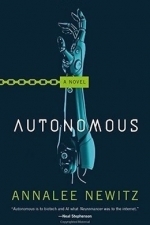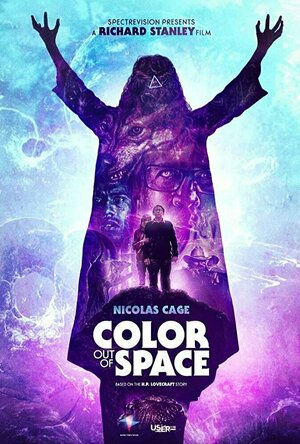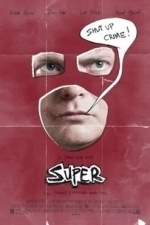Hazel (1853 KP) rated A City Dreaming in Books
Dec 14, 2018
<i>I received this book for free through Goodreads First Reads.</i>
“The city never sleeps, but it’s always dreaming.” And, by dreaming, Daniel Polansky clearly means nightmares. <i>A City Dreaming</i> is, for the lack of a better term, an urban fantasy novel. Embracing elements of dystopia and steampunk universes, it is difficult to determine the time period in which it is set. What can be established is that, wherever you are in the world, you are never far away from a monster.
<i>A City Dreaming</i> revolves around a semi-anonymous character known as M. M appears to be some form of magician who wishes he could spend his days listlessly staring into the bottom of his beer glass. Yet with misbehaving creatures and warring goddess living in the city of New York, peace is a rare phenomenon in M’s life. From demons to murders and mind-boggling situations, there is never a dull moment.
Each chapter of <i>A City Dreaming</i> is, in some way, an individual story. Apart from the occasional recurring character, no scenario is ever continued after the chapter concludes. This is initially a cause for confusion. With no clear direction or purpose, it is hard to remain engaged with the author’s imagination.
Readers familiar with contemporary fantasy writers, such as Neil Gaiman, may understand Polansky’s vision – think <i>Neverwhere</i> and <i>American Gods</i> combined, but weirder. M spends the majority of his time either inebriated or on drugs, and, to be frank, it would not be surprising to learn the author was on drugs at the time of writing. Imagine Neil Gaiman on drugs; that is how bizarre this book is.
Despite his penchant for recreational drugs, M is an intelligent character that can humorously talk himself out of impossible situations. However it is often a hopeless ordeal to fathom the process of his intoxicated mind. As a result, <i>A City Dreaming</i> loses its thrill and excitement.
As this is the first Daniel Polansky novel that I have read, I do not know whether this is his usual style of writing or whether it was an attempt at something new. What I did observe was the intelligence hidden behind the excess of expletives and lewd content. Polansky writes with certain aptitude, almost as if he has swallowed a thesaurus.
Fans of Neil Gaiman and Brandon Sanderson may enjoy <i>A City Dreaming</i> more than new readers, since they will already be familiar with the style of bemusing narration. <i>A City Dreaming</i> does not live up to the definition of a novel, however as short, connecting stories it provides the intended entertainment. Almost certainly, this book will be received with mixed reviews; nonetheless it will undoubtedly eventually find its fan base.
Hazel (1853 KP) rated Storm Watcher in Books
Dec 17, 2018
Is it possible for a book to be both too fast and too slow? This is what the story feels like in Maria V. Snyder’s contemporary children’s book <i>Storm Watcher</i>. It is the summer holidays and twelve year old Luke is working at the <i>Storm Watcher Kennel</i>, helping to take care of and train the many dogs living there. For his thirteenth birthday his father has promised him a bloodhound puppy, but what Luke really wants is a fluffy white Papillon – a dog that his father and brothers believe is useless and girly.
An important aspect of the story is Luke’s debilitating fear of storms. Although he has always been frightened of thunder and lightening, his mother’s recent death during a storm has greatly heightened his fears. Despite this phobia, Luke has enough knowledge and interest to act as an amateur meteorologist.
It takes a long time to get into the storyline. To begin with there is so much going on – dog breeding and training, starting to work with Willajean and her daughter Megan, feelings of guilt about mother’s death, fear of storms – making it difficult to determine which parts are essential to the plot, and more importantly, figure out the plot in the first place. Three months rapidly fly by, which in a short novel does not leave much room for an exciting climax, yet nothing major occurs.
Perhaps only the adult reader will detect the dullness <i>Storm Watcher</i> exudes, whereas when seen through a child’s eyes the story may be more exciting. Snyder has included a few interesting concepts such as over coming fear, dealing with grief and standing up for yourself. All these ideas are important for young people to understand and utilize in their own lives. The topic of meteorology, on the other hand, is not something children<i> need</i> to know, however it may interest them and provide the opportunity to learn something new. The author used to be a meteorologist before she turned to the world of literature, therefore has been able to provide a vast amount of knowledge about storms and weather, including a lengthy list of facts at the back of the book.
Maria V. Snyder’s young adult novels are well known throughout online communities, therefore <i>Storm Watcher</i>, although written for a younger target audience, had a standard to live up to. Unfortunately the result was disappointing, slow and a struggle to read. The book contains interesting ideas; however these could be expanded on to create a more engaging, full-length novel.
Goddess in the Stacks (553 KP) rated Autonomous: A Novel in Books
Dec 22, 2018
Meanwhile, Eliasz is a conflicted military agent who is sexually attracted to robots. Or at least to his partner, Paladin, though a flashback shows what might have been the start of his attraction to robots. Paladin is probably the single most interesting character in the entire book, as she muses on the nature of being indentured, and searches through her memories and the internet for information about her situation.
The book does have LGBT content - Jack is bisexual, and Eliasz is - robosexual? Is that a thing? Paladin could be called nonbinary or trans; she repeatedly mentions that gender isn't a thing to robots, but because she's a military robot, most people call her a he at the beginning of the book. She learns the brain inside her is female, and to make Eliasz more comfortable with his attraction, she decides to use female pronouns. Eliasz does use the F word to refer to himself being attracted to the robot at the beginning, when they were using male pronouns. This puzzles Paladin for a while, causing her to search the term and figure out what Eliasz meant by its use.
There's a lot of complex world-building in this book that is barely brushed past. From the corporations who own patents covering everything, to the system of indenture that covers humans as well as robots, to the bio-domes that cover cities (but it's livable outside the biodomes, so why are they needed?), to the new federations that cover continents that used to be divided into several countries - there's a LOT going on. And there's not just robots, but also some pretty advanced cybernetics implanted in humans as well as an everpresent network of data that can be tapped into with implants that everyone has.
Ultimately, for as complex as the world is, and cohesive as the plot is, I'm left wondering who, if anyone, was in the right in this story. I'm not sure if we're supposed to be happy with the ending or not. I've seen other reviews saying Neuromancer was a way better book in a similar vein, and I actually have copy of that waiting to be read. So we'll see.
You can find all my reviews at http://goddessinthestacks.com
Sophia (Bookwyrming Thoughts) (530 KP) rated Merlin's Children in Books
Jan 23, 2020
Merlin's Children starts off pretty much exactly where Taliesin Ascendant left off, and we finally get answers from the prologue of Book 1.
Or maybe I just now realized the answer to the question and it was in my face the entire time. *shrugs* I'm pretty sure it doesn't matter since as long as the question is answered, then it's all good.
I still have to applaud the author for continuing to be practically flawless in grammar/spelling (I make it a point to mention these things :p).
But I do find it really weird that the characters seem to draw their eyebrows downward a lot. I'm not sure if it's possible or I'm just those peeps who can only raise my eyebrows, but each time it was mentioned, I was pretty tempted to run into the bathroom, stare at the mirror and see if it was possible.
My mother would have thought I was insane if she saw me so I didn't do it.
HEY! HERE'S A POSSIBLE HUGE SPOILER! I sort of wanted what happened to Jamison to be something else. Maybe because I was thinking of what I read about the Nikita finale in TV Guide, in which I sorrily missed. -_- I am glad that some of the characters from the very first book return though. ^_^
On a final note, Megan has upped her game a bit compared to the last 2 books (yes, I'm staring at the raw ratings for the series). It's more fast paced, has more action and if anything, I sort of have a short attention span. A semi one, since I can tolerate SOME boring books to the end. :D But then the review turns out bad. I think that was irrelevant.
For some reason, I keep reading Ermengarde's name as "Er Ma Gawd" so I ended up reading "so and so and Ermagawd..." every so often. That might actually be how the name is pronounced, but I'm honestly not sure so I'll just call her OMG. :D
Another thing irrelevant I suppose.
---------------------
Original Rating: 4.5
Review copy provided by the author for review
Formatting has been lost due to copy and paste.
This review and more can be found at <a href="http://bookwyrming-thoughts.blogspot.com/2014/02/review-merlins-children-by-megan-joel-peterson.html">Bookwyrming Thoughts</a>
<a href="http://bookwyrming-thoughts.blogspot.com/"><img src="http://4.bp.blogspot.com/-Gi5Rk5yLloA/UtliaUbdL3I/AAAAAAAACbE/J27z92_qrYU/s1600/Official+Banner.png"; /></a>
Emma @ The Movies (1786 KP) rated Color Out of Space (2019) in Movies
Feb 8, 2020
The Gardners are settling into the secluded family home nicely, no city hustle and bustle to bother them. That peaceful life is shattered when a curious meteorite crashes into their garden. Far from a normal bit of space debris, the rock seems to be changing everything around it. It's taking over, the plants, pace and time, even the family themselves.
Briefly hearing Richard Stanley before this screening made me feel this adaptation of Lovecraft's work of the same name was in good hands, he clearly has an appreciation for what he's was working on and the imagery he creates makes for incredible viewing.
So, straight to Nic Cage... he doesn't quite go full Cage, but he's pretty close. It's the usual insanity we've all come to love.
This film is a little crazy on many levels, the family as a whole are very off before we even get to the magical meteorite. Each member seemingly has their own little corner of crazy town mapped out, and yet when you look at them as a whole you'd wouldn't put them in the same family.
As the film progresses and things get even more bizarre the family feel even less connected than at the beginning. The alien influence is pushing them further apart, but on top of that the script falls away in the middle and chaotic devolving of sanity replaces it. Each member of the family has their own experience with the meteorite, apart from chaos and the underlying cause none of it feels connected.
To say it plainly, there's some really messed up stuff. I would love to see how some of it was achieved because if Richardson is doing half the things it appears she is then she deserves some kind of award. I've got the short story to read so I can compare the two because honestly I can't visualise the written version of this story.
The creatures that evolve are made to be terrifying, and they do scare, but the comedy moments that come through from the performances (mostly unintentionally I guess) detract from it being all that shocking.
Our meteorite has a great influence over the sets for most of the movie, the colours and the growth are used to good effect. The progression is clear and well balanced, it might not always look realistic but the fact that that's the point helps.
When you look at Color Out Of Space as a whole it's all over the place, interesting but ambling, understandable and confusing. Despite that, it's an experience that I enjoyed having.
Originally posted on: https://emmaatthemovies.blogspot.com/2020/02/color-out-of-space-movie-review.html
Gareth von Kallenbach (980 KP) rated Super (2011) in Movies
Aug 7, 2019
The film begins with Frank (excellently played by Rainn Wilson) happily married to Sarah (Liv Tyler) who is a recovering drug addict. The happiness is shattered when Sarah begins using again, thanks to Jacques the drug dealer (Kevin Bacon) and then one day she disappears. Frank searches for Sarah and eventually finds her under the control of Jacques. Unable to get her away from Jacques, Frank goes to the police for help. Unfortunately because Sarah left on her own accord, no law has been broken (except for the drug stuff) so they are unable to help him.
Frank tries to move on, but without Sarah life seems meaningless. Then in his darkest hour he has a vision of The Holy Avenger (Nathan Fillion). Heeding the vision, Frank becomes The Crimson Bolt, pledges to fight crime and to save Sarah. There is just one small problem – Frank has no idea how to be a superhero. Research is needed, so off to the comic book store he goes, of course, and there he meets Libby (Ellen Page). Libby advises him which comics to read that have superheroes who do not have powers. Armed with this knowledge, The Crimson Bolt officially begins fighting crime in the most unusual of ways and not too long after, Libby becomes Boltie, his trusted, sexy sidekick.
This very entertaining, action-filled, dark comedy has more twists and turns than a game of Chutes and Ladders, and it will keep you glued to the screen until the end. Will they save the city from villainy? Will they save Sarah’s bacon? (Sorry, with Kevin Bacon playing the bad guy I couldn’t resist.)
Super has a different take on the superhero genre than what I’ve seen in past movies. Only Rainn Wilson could have properly portrayed the uniqueness that is Frank/Crimson Bolt and the same goes for Ellen Page in regards to Libby/Boltie (possibly the best sidekick ever). To make a long review short, let me sum up this way, everyone in the movie no matter the length of their part did an amazing job in their role. With that said, my only wish was that the story would have allowed for more screen time for Gregg Henry (Detective John Felkner) and a musical number for Fillion’s Holy Avenger. if you liked Fillion as Captain Hammer in Dr. Horrible’s Singalong Blog, then you’ll love him in this role. But those things would have most likely thrown off the perfect balance of action, humor and character interaction that made this movie so enjoyable.

5miles: Buy and Sell Locally
Shopping and Lifestyle
App
5miles is the highest rated local marketplace app, helping you buy and sell stuff in your area....

Otogi: Spirit Agents
Games, Entertainment and Stickers
App
"Help wanted! Calling everyone with spirit essence! Become a spirit agent today!" Um… I just have...
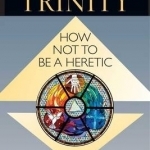
The Trinity: How Not to be a Heretic
Book
"Trinity" is Christianity's most basic description of who God actually is-and who he needs to be in...
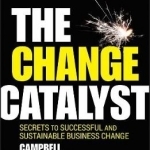
The Change Catalyst: Successfully Instigating Sustainable Change: Secrets to Successful and Sustainable Business Change
Book
The essential companion for delivering successful and sustainable change. 'The Change Catalyst is...

